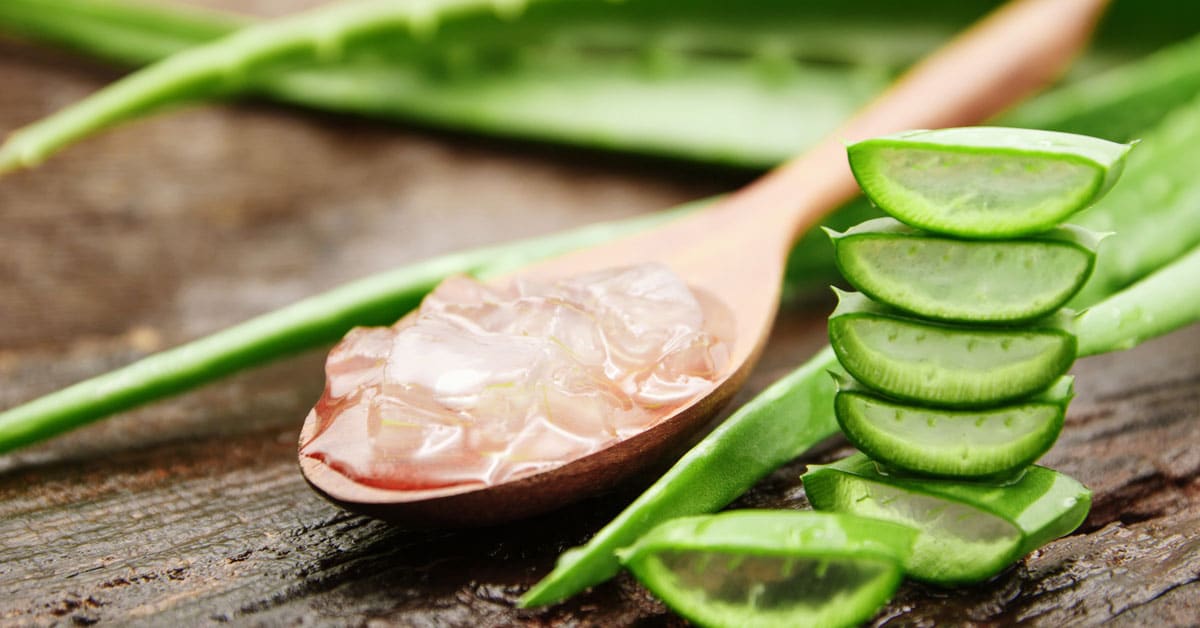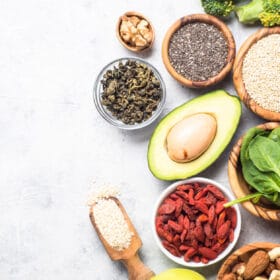Chances are, at some point in your life, you've been in contact with [...] Aloe Vera have come into contact with it. No wonder, because aloe vera is contained in so many products that it is almost unrealistic that you have not yet come into contact with it. After all, aloe vera is an ingredient in numerous creams, ointments and lotions and the plant can now also be found in yogurts and smoothies. But what is aloe vera actually? What positive properties does the plant have? And how can you make use of this knowledge?
What is aloe vera?
The aloe vera plant is also known in this country as the "desert lily" and therefore originates from the tropical and subtropical desert regions of Latin America, Asia and Africa. Typical of the appearance of the plant, which, like garlic and onions, belongs to the lily family, are its tough and barely flexible leaves. These are covered with thorns and a layer of wax, making them look very similar to agaves.
Due to its inhospitable environment, the plant has had to adapt greatly over time and has learned to store essential water and produce its own nutrients. The aloe vera plant achieves this through its thick leaves, which contain a gel-like mass inside. It is precisely this mass that holds the secret of the plant and is the reason why aloe vera products are so popular in the beauty and health sector. After all, it contains over 200 different active ingredients, not all of which have been fully researched.
What are the active ingredients of aloe vera?
One of the most important active ingredients found in the plant's gel, which consists almost exclusively of water, is acemannan. This is an essential carbohydrate that plays a central role both for the plant and for humans. Even if carbohydrates are not generally considered essential, our body still needs certain carbohydrates.
One such carbohydrate is acemannan, which our body only produces until puberty. After that, it must be obtained from food. Why is acemannan so important? Quite simply, the substance is a component of cell membranes and helps to protect the body against bacteria, viruses, fungi and parasites. This active ingredient also increases the production of T-killer cells, lymphocytes and monocytes, which is crucial for the immune system.
Many other mono- and polysaccharides from the aloe vera gel have a similar effect. In addition to these very special carbohydrates, aloe vera also contains seven of the eight essential amino acids that we need to consume in our diet anyway. The highest concentrations are leucine, isoleucine, valine and lysine. In addition, enzymes such as catalase, cellulase, lipase, amylase and phophatase help to strengthen digestion and eliminate free radicals via antioxidant processes.
How is aloe vera used in practice?
A plant that is completely self-sufficient thanks to its peculiar properties, and which also has more than 200 potentially interesting ingredients for science, has numerous areas of application. But which functions are most interesting for athletes?
1 -Aloe vera transports vitamins and minerals into the body
People who train a lot also have an increased need for nutrients. This applies not only to macronutrients, but equally to micronutrients. So it's a good thing that aloe vera is a real micronutrient bomb and is therefore not wrongly cited as a superfood along with kale, blueberries and pomegranates.
And all of these foods are rightly named because they all have the ability to fight infections and repair cell damage. The minerals found in the highest concentrations in the plant and the products made from it are calcium, chromium, copper, selenium, magnesium, manganese, potassium and zinc. Aloe vera is also rich in vitamins A, C, E and B12 as well as choline and folic acid.
2 -Aloe vera helps with rehydration
Surely consuming plant substances from a plant that holds large amounts of water and supplies itself with nutrients must be good for the water balance? That's right, it's not for nothing that various manufacturers offer special recovery drinks with added aloe vera. This is extremely practical, especially after hard training sessions. However, you should read the label before buying, because the somewhat tangy taste of the aloe vera plant is masked by many manufacturers with a veritable flood of sugar.
3 -Aloe vera is good for the digestive tract
The ingredients in aloe vera products have a positive effect on digestion and the digestive tract on several levels. A study published in The International Journal of Biochemistry & Cell Biology in 207, for example, revealed that aloe vera products can be used very effectively against heartburn. In addition, the enzymes it contains ensure that fats, proteins and carbohydrates as well as fiber can be digested much more easily.
4 -Aloe vera keeps hair healthy
If you want to keep your hair beautiful for a long time, you should use shampoos and other care products containing aloe vera. The main reason for this, in addition to the numerous other vitamins, is the high concentration of vitamin B-12 and folic acid. Both substances prevent the hair from becoming brittle and falling out. In addition, the vitamins A, C and E they contain help your body to keep your hair soft and shiny. And all without skin irritation, itchy scalp or dry scalp.
5 -Aloe vera moisturizes the skin
Aloe vera is also included in skincare products for good reason. Back in 2014, a clinical study showed the positive influence of aloe vera gel on the skin's fluid balance. The secret here is that the ingredients in aloe vera have the ability to stimulate the production of the skin components elastin and collagen, which keep the skin resilient and supple. Aloe vera is also an excellent remedy for sunburn. According to a study by Dr. Julia Stump from the Albert-Ludwigs-University of Freiburg, it is even better than cortisone.
How can I make aloe vera gel at home?
If you don't want to buy aloe vera products because they contain ingredients that you don't tolerate, for example, you can easily make your own effective aloe vera gel. Simply cut a leaf from the plant and place it upright in a small bowl so that the gel can run out on its own. Once the aloe vera gel has dripped out, cut the leaf open with a knife and scrape out the last remnants with a spoon.
The great thing is that you can use the gel straight away as it is a purely natural product. Use it as a skin cream, shampoo, as a base for ice cubes or as an additive for your protein shake. To make the gel last longer, you should transfer it to a jar and store it in the fridge.
Does aloe vera also have side effects?
A plant that combines so many active ingredients, including essential oils, can of course also cause side effects and allergic reactions. Apart from individual allergies, the substance aloin, which the plant uses as protection, is a possible cause of side effects. At least if there is a high overdose. However, according to figures from the US Food and Drug Administration (FDA), there have only been 30 known cases of severe side effects such as panic attacks, blood pressure fluctuations or pancreatitis. So, as always, the dose makes the poison.
Vitamin C
is an essential water-soluble vitamin that is involved in a variety of vital functions in the body. The vitamin performs numerous important metabolic tasks - especially in athletes. As our body cannot produce the vitamin itself, you need to make sure you have a sufficient supply every day.
Vitamin C



